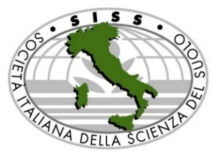Haze problems in Samoeng district Chiang-mai, Thailand
DOI:
https://doi.org/10.6092/issn.2281-4485/21157Keywords:
Haze, Forest Fire, Open Burning, The Upper Northern of ThailandAbstract
The weather around the world is changing. Its quality is deteriorating due to contamination from toxic substances, which may be in various forms such as gases and dust, which is called air pollution. This is a problem that the worldwide is concerned because it affects human health and causes serious diseases. The upper northern region of Thailand has been facing this problem for a long time, more than 2 decades. Therefore, this research aims to investigates the cause and find ways to solve the problem using qualitative research, physical and environmental survey techniques of the community, observation, in-depth interviews 34 key informants, data collection period from January to December 2024. The research results found that: the cause of the haze in Samoeng District is open burning and forest fires, which are caused by hunting and foraging forest products, which are the way of life of the people in this area. The factors that promote the severity of the haze problem are winds blowing across the border from other areas, climate change, and the basin. The short-term or urgent solution is, watering the roadsides to create a wet firebreak to prevent forest fires. The development of drones to better quality for extinguishing fires. The long-term solution is to strictly enforce the law against those who create sources of haze. The development of technology and modern tools can identify the source and amount of pollution. The last approach is to join in solving the haze problem at the regional and global level to benefit from technology transfer from countries with the potential to solve the problem.
References
ANNOUNCEMENT OF THE NATIONAL ENVIRONMENT BOARD NO.10 (1995) issued in accordance with the National Environmental Quality Promotion and Conservation Act, 1992, regarding the determination of air quality standards in the general atmosphere. (1995, 25 May). Announced in the Royal Gazette. 112(42D). https://www.pcd.go.th/laws/2831/
BUREAU OF FOREST FIRE PREVENTION, SUP-PRESSION AND CONTROL. (2024) Public participa-tion to prevent and solve the problems of forest fires and haze. https://portal.dnp.go.th/DNP/FileSystem/downlo ad?uuid =711df9ab-572b-47ef-9a0f-242758f7f781 f781.pdf
CHOTIAMORNSAK C., LABYAI, D. (2018) Meteoro-logical factors related to air pollution problems in Chiang Mai Province. Journal of the Science, Technology and Environment for Learning Research Unit, 9(2):237-249. https://doi.org/10.14456/jstel.2018.19
COMMUNITY FOREST ACT 2019 (2019). In the Royal Gazette, 136(71A):71-103. https://www.forest.go.th/law/ wp-content/uploads/sites/33/2019/06/Act-Community Forest-2019.pdf
DEPARTMENT OF NATIONAL PARK, WILDLIFE AND PLANT CONSERVATION. (2024). Pa Samoeng Viewpoint - Khun Khan National Park. Retrieved from https://portal.dnp.go.th/ Content/ nationalpark?contentId = 3482
FAC16. (2024). Forest area. Retrieved from http://www. fca16.com/uploaded/webmaster/files/ forest%20area.pdf
FOREST ACT 1941. (1941). In the Royal Gazette, 58: 1417-1451. https://www.forest.go.th/law/wp-content/up loads/sites/33/2022/02/Forestry Act - B.E. 2484 (1941) and amendments - 2.pdf
LIN Y., ZOU J., YANG W., LI C.Q. (2018) A review of recent advances in research on PM2. 5 in China. International journal of Environmental Research and Public Health, 15(3):438. doi:10.3390/ijerph15030438
NATIONAL PARK 2019. (2019). In the Royal Gazette, 136(71A):145-165). http://www.onwr.go.th/wp-content/ uploads/2022/09/7.National Park Act-2019.pdf
NGKAEW. (2019). PM2.5 dust values in 2019 surge. The head of the Environmental Science Research Center pointed out that the cause is from three main factors. Retrieved from http://angkaew.masscomm.cmu.ac.th/.
POLLUTION CONTROL DEPARTMENT. (2004). National master plan for open burning control. Retrieved from http://www.pcd.go.th/publication/4692/
POLLUTION CONTROL DEPARTMENT (2007). Note on Pollution, Thailand Pollution Situation 2007. Bangkok: Author. https://www.pcd.go.th/publication/3612/
POLLUTION CONTROL DEPARTMENT. (2017). Measures to announce a ban on burning and solving the haze problem in 9 northern provinces. Retrieved from https://www.pcd.go.th/wp-content/uploads/2020/04/pc
dnew-2020-04-23_05-20-23_362589.pdf
RESERVE FOREST ACT 1964. (1964). In the Royal Gazette, 81(38):263-281). http://www.onwr.go.th/wp-content/uploads/2022/ 09/28. National Reserved Forest Act-B.E.-2507.pdf
SUN X., CHEN H., LIU Z., CHEN H. (2020) Research on PM2. 5 concentrations based on dissipative structure theory: a case study of Xi’an, China. Scientific Reports, 10(1):16435. https://doi.org/10.1038/s41598-020-73598-9
THAIRATH ONLINE. (2024) Samoeng forest fires are in serious crisis floating into the city of Chiang Mai causing PM 2.5 to skyrocket. Retrieved from https://www.thairath.co.th/news/local /north/ 2774446
ZHANG, Q., ZHENG, Y., TONG, D., SHAO, M., WANG, S., ZHANG, Y., ... & HAO, J. (2019). Drivers of improved PM2. 5 air quality in China from 2013 to 2017. Proceedings of the National Academy of Sciences, 116(49), 24463-24469. https://doi.org/:10.1073/pnas.1907956116
Downloads
Published
How to Cite
Issue
Section
License
Copyright (c) 2025 Teeputai Saengas, Thanarin Harnkiattiwong

This work is licensed under a Creative Commons Attribution 4.0 International License.









